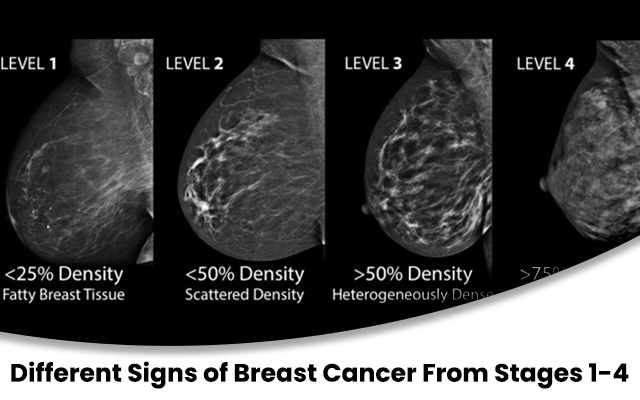Breast cancer is a condition that evolves through various stages, with each stage presenting distinct signs and symptoms. Understanding these signs can help in early detection and more effective treatment. In this blog, we’ll explore the symptoms associated with each stage of breast cancer, from stage 1 through stage 4, to give you a clearer picture of what to expect.
Stage 1: Early Detection is Key
In the early stage of breast cancer, the symptoms are often subtle but crucial to recognize. Breast cancer 1st stage symptoms might include:
- A small lump: Often painless, this lump can be hard to detect without a thorough self-examination.
- Changes in breast shape or size: Even slight alterations can signal the early onset of cancer.
- Nipple changes: Inversion of the nipple or unusual discharge may also occur.
These symptoms can be easy to overlook, which is why regular screening is essential for early detection.
Stage 2: Noticeable Changes Begin
As breast cancer progresses to stage 2, the symptoms become more apparent. You might notice:
- Larger lump or mass: The lump may grow in size and become more noticeable during a self-exam.
- Swelling in the lymph nodes: This can occur under the arm or near the collarbone.
- Skin changes: Redness, dimpling, or a texture resembling orange peel can develop.
At this stage, cancer has typically started to spread beyond the original tumour site but is still localized.
Stage 3: Advanced Symptoms and Spread
Breast cancer 3rd stage symptoms indicate a more advanced progression of the disease, with cancer spreading to nearby tissues. Key signs include:
- More significant changes in breast appearance: The breast may become noticeably distorted or swollen.
- Persistent pain: The affected area may be painful to touch, and the pain could be more frequent.
- Increased skin and nipple changes: The skin may continue to dimple, and the nipple might start to retract.
Breast cancer 3rd stage symptoms are more pronounced and often harder to manage, necessitating more aggressive treatment.
Stage 4: Metastatic Cancer
Stage 4 breast cancer, also known as metastatic cancer, is the most advanced stage. It means the cancer has spread beyond the breast to other parts of the body, such as the bones, liver, or lungs. Symptoms include:
- Severe pain: Especially in the bones if the cancer has spread there.
- Chronic fatigue: Persistent tiredness and lack of energy are common.
- Breathing difficulties: If the cancer spreads to the lungs, breathing can become more difficult.
- Weight loss and loss of appetite: Unexplained weight loss and decreased appetite are also warning signs.
Understanding the symptoms at each stage can be life-saving. Early detection through recognizing breast cancer 1st stage symptoms provides the best chance for successful treatment, while awareness of breast cancer 3rd stage symptoms can help in managing and responding to more advanced cases effectively. Regular check-ups and consultations with a healthcare provider are crucial in navigating the complexities of breast cancer at every stage.

